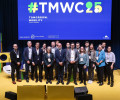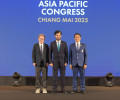From Auto #18: The future on show
Las Vegas’ vast annual Consumer Electronics Show is fast becoming the automotive industry’s go-to venue for showcasing its visions of future mobility. The 2017 show was no exception. AUTO looks at 10 of this year’s most intriguing debuts
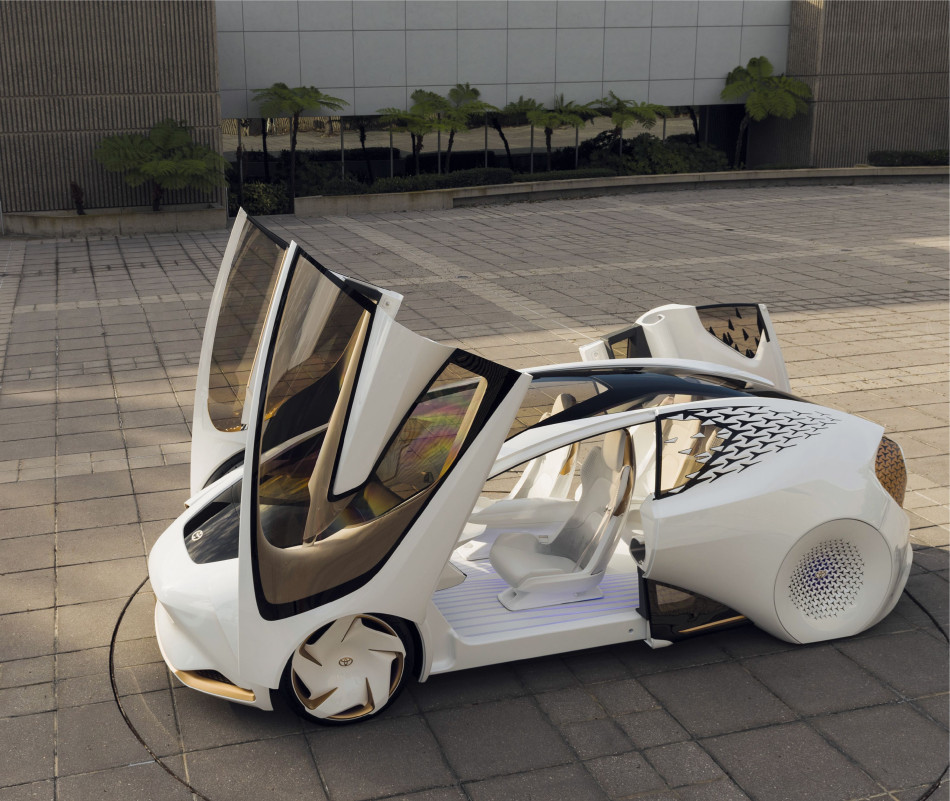
Click here to read the full Auto #18 magazine.
TOYOTA CONCEPT-i
Concepts of emotion and well-being were high on the agenda at the US-based Consumer Electronics Show, but Toyota perhaps explored the notion furthest with its Concept-i vehicle, which is designed to “foster a warm and friendly user experience.”
Created by Toyota’s California subsidiary Calty Design Research, the concept car winks at onlookers and can display messages on its exterior (such as warnings to following cars). The company also says that “thanks to the car’s advanced automated driving technologies, people with all levels of ability can enjoy the ride.”
“You’re still in charge of the car,” the company adds, “but through biometric sensors, Concept-i can detect what you’re feeling. That information is then analysed by the car’s AI. That’s when the automated features kick in. The AI will analyse your emotion, make a recommendation and, if necessary, take over and drive you safely to your destination.”
CHRYSLER PORTAL
US car maker Chrysler targeted the idea of the vehicle as a bridge between work and home with its electric Portal concept. Featuring sliding doors, the car has a large interior space that thanks to seats mounted on parallel tracks can be configured to the user’s preference. It’s semi-autonomous, but can be upgraded to full autonomy, which then affords driver and passengers the ability to tap into its vehicle wireless network to access a range of Cloud-based applications. The Portal concept is estimated to have a range of more than 400km on a full charge, while DC Fast Charge (350 kW) recharges the battery pack to 240km of range in less than 20 minutes.
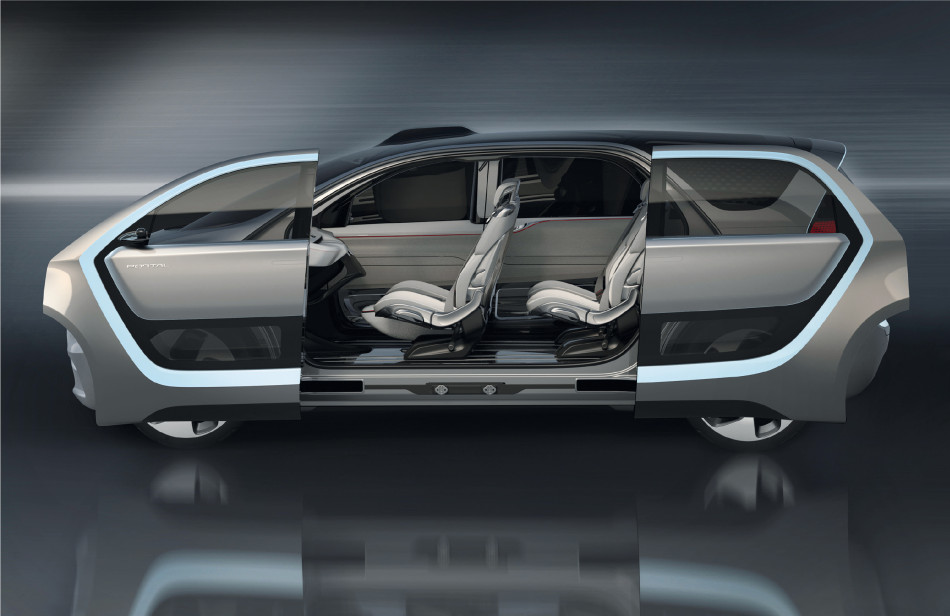
BOSCH CONCEPT CAR
It wasn’t just full-scale auto makers that brought their innovations to CES. Automobile electronics supplier Bosch showed off its vision of the future of connectivity, creating a
concept by which “products will become partners, companions and personal assistants.” The theory is based on research conducted by the company that suggests connected vehicles will give people who drive a lot the opportunity to use nearly 100 hours each year in a more efficient and relaxed way. The Bosch concept relies on facial recognition technology to recall stored user preferences such as mirror position, temperature and favourite radio station. The car’s interface is controlled via a touch display and gesture control, while Cloud-based services enable video conferences, or allow drivers and passengers to locate parking, plan shopping trips and control connected devices at home.
“If the car is connected to the smart home or the smart city via the Cloud, there will be measurable benefits,” says Bosch board member Dr Werner Struth. “Connectivity is turning the car into an assistant on four wheels.”
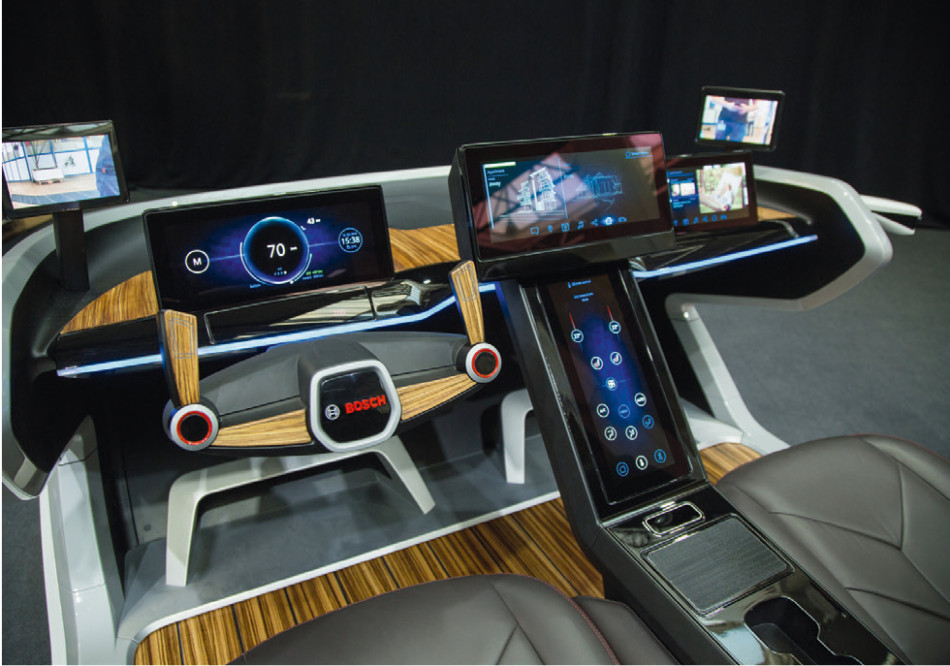
FORD AND ALEXA
Right across CES ‘robot’ personal assistants were a big talking point and the automotive world has lost no time in embracing the trend. Ford announced it is to partner with Amazon to integrate the tech firm’s Alexa Cloud-based voice assistant into its vehicles beginning this summer. On cars equipped with the system, users will be able to control climate, navigation, entertainment and even do shopping through natural conversation. Alexa can also manage to-do lists, make calls, and can control lighting and security systems at home when paired with a compatible smart home device. Ford isn’t alone in bringing such assistants on board – VW and BMW are also to include the technology in some models.

MERCEDES-BENZ CONCEPT EQ
Mercedes showed its all-electric EQ concept car at CES, first unveiled at the Paris Motor Show. The concept is the first of a standalone EQ brand of the group, with the name standing for Electric Intelligence. According to Mercedes, EQ offers a comprehensive electric mobility ecosystem of products, services, technologies and innovations. The spectrum ranges from electric vehicles to wallboxes and charging services to home energy storage units. With a range of up to 500km, the Concept EQ is not just fully electric – it is also fully autonomous.
“The mobility of the future at Mercedes-Benz will stand on four pillars: connected, autonomous, shared and electric. Concept EQ is the logical fusion of all four pillars,” says Dr Dieter Zetsche, CEO of Daimler AG and Head of Mercedes-Benz Cars. “The emission-free automobile is the future. And our new EQ brand goes far beyond electric vehicles. EQ stands for a comprehensive electric ecosystem of services, technologies and innovations.”
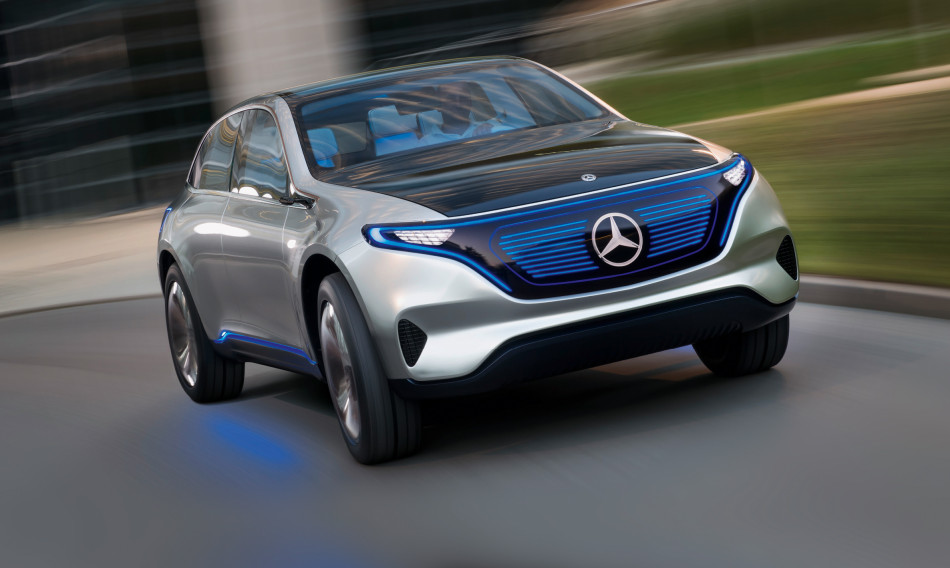
MERCEDES-BENZ FIT AND HEALTHY
Designed to maximize well-being during drive time, Mercedes-Benz’s Fit and Healthy concept adds a variety of new systems to a current S-Class saloon car. “Our vision is that
Mercedes-Benz drivers should arrive at their destination feeling better and fitter than when they got in the vehicle,” says Ola Källenius, the company’s Head of Group Research and Car Development. The system includes seats that move with the body to alleviate fatigue and feature built-in massage functions. Heart-rate sensors on the steering wheel let drivers know whether they’re stressed, while the car can interact with a wearable wristband that measures users’ vital signs.
“There is a close correlation between safety and well-being: a person who feels safe feels
better, and a person who feels well drives more safely,” adds Anke Kleinschmit, Head of Group Research at Daimler. One key aspect of the new system is increased privacy. A prerequisite for all services is that customers receive transparent information and decide what data is collected for which purpose.
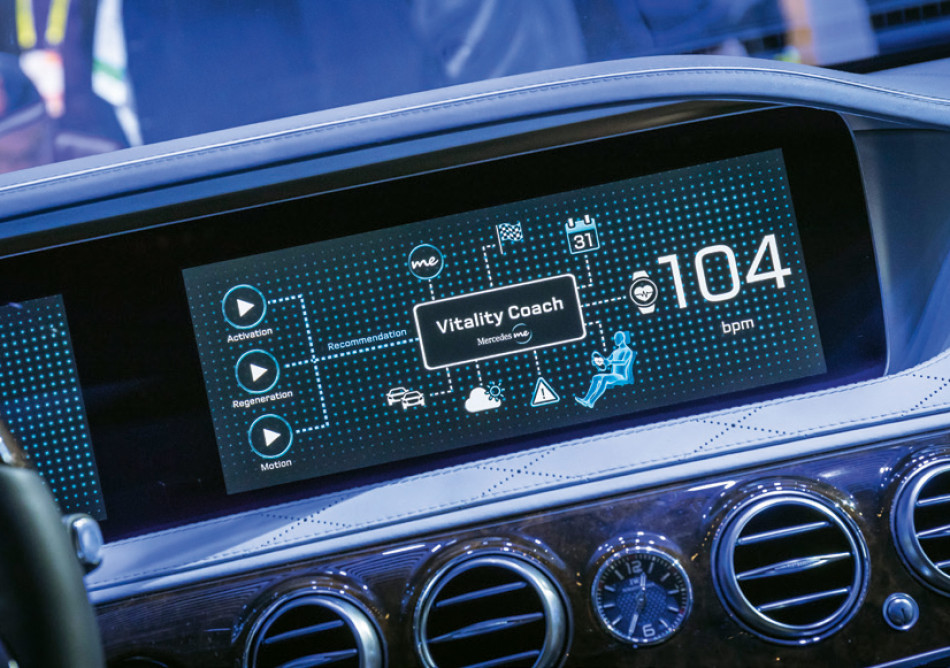
HYUNDAI MOBILITY VISION CONCEPT
One of the more radical concepts on show at CES was Hyundai’s Mobility Vision concept, in which the car is effectively part of your home, physically ‘docking’ with a driver’s house. In Hyundai’s words, the concept “suggests how the car could shed the image of a conventional vehicle, integrating itself with the living space when docked, before becoming a mobile living space when customers need to move around.”
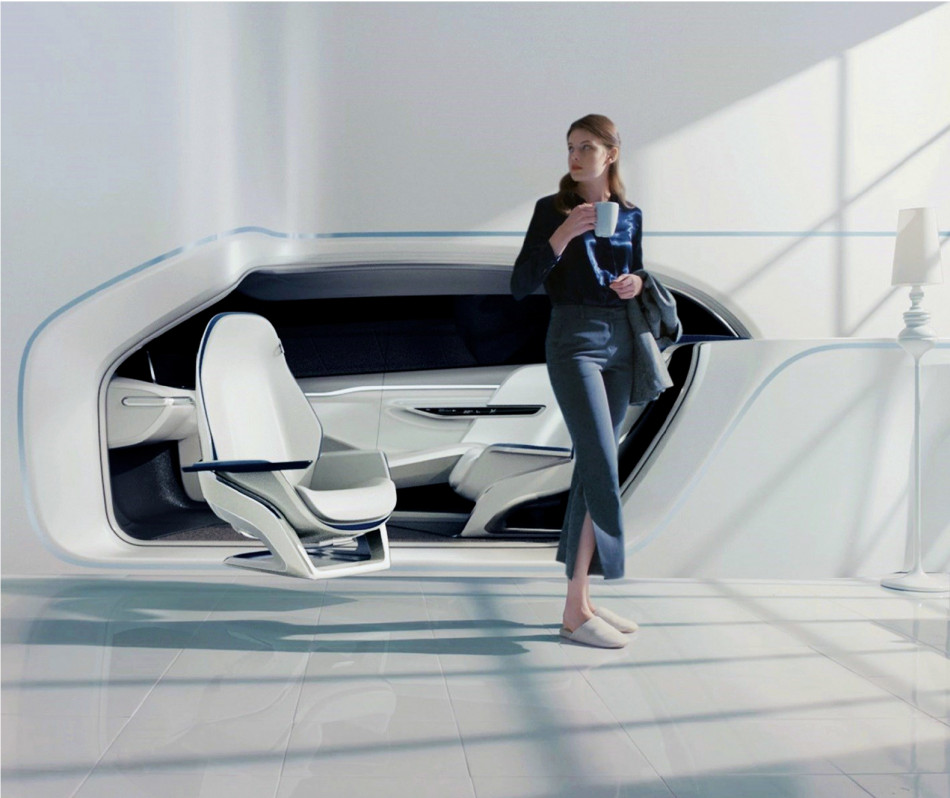
BMW HOLOACTIVE
The German car maker chose CES to unveil its HoloActive Touch system, a holographic virtual interface. Projected inside the cabin the interface acts like a virtual touchscreen; its free-floating display is operated using finger gestures and confirms the commands with what the driver perceives as tactile feedback. BMW also presented a vision of how car interiors might appear in the future with its i Inside Future sculpture, a feast of wood and composite materials. BMW’s designers have abandoned the idea of the driver centric cockpit and instead opted for a connected living space where passengers can stay busy on the Internet or simply relax.
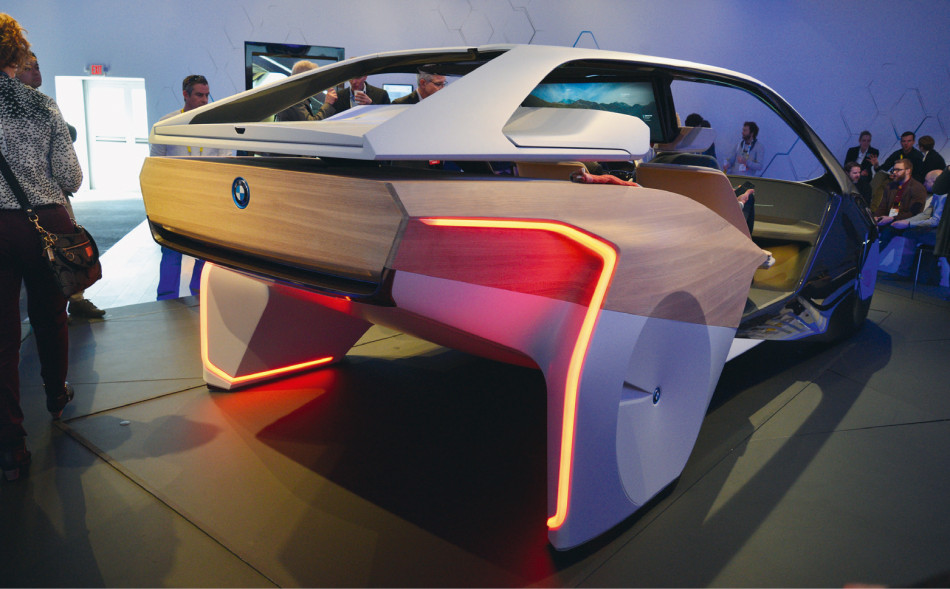
FARADAY FUTURE
The US start-up has had a somewhat rocky genesis and it didn’t get much smoother at CES when its first production car, the FF91, failed to obey self-parking commands set by its billionaire Chinese backer Jia Yueting during a live demo. That glitch aside, the FF91 is a Tesla rival with an impressive set of statistics. It boasts 1,050hp on demand and can accelerate from 0-60mph in 2.39 seconds, while the Tesla Model S P100D reaches 60mph in 2.5s. In addition to the ample power, the company’s Senior Vice-President Nick Sampson told showgoers that the car would feature a “driverless valet” system – where the driver can leave the car to park itself – as well as two “aerodynamic antennas”, which will enable the car to act as an oversized wireless router. The car will unlock itself using face recognition technology and features the ability to learn driver preferences.
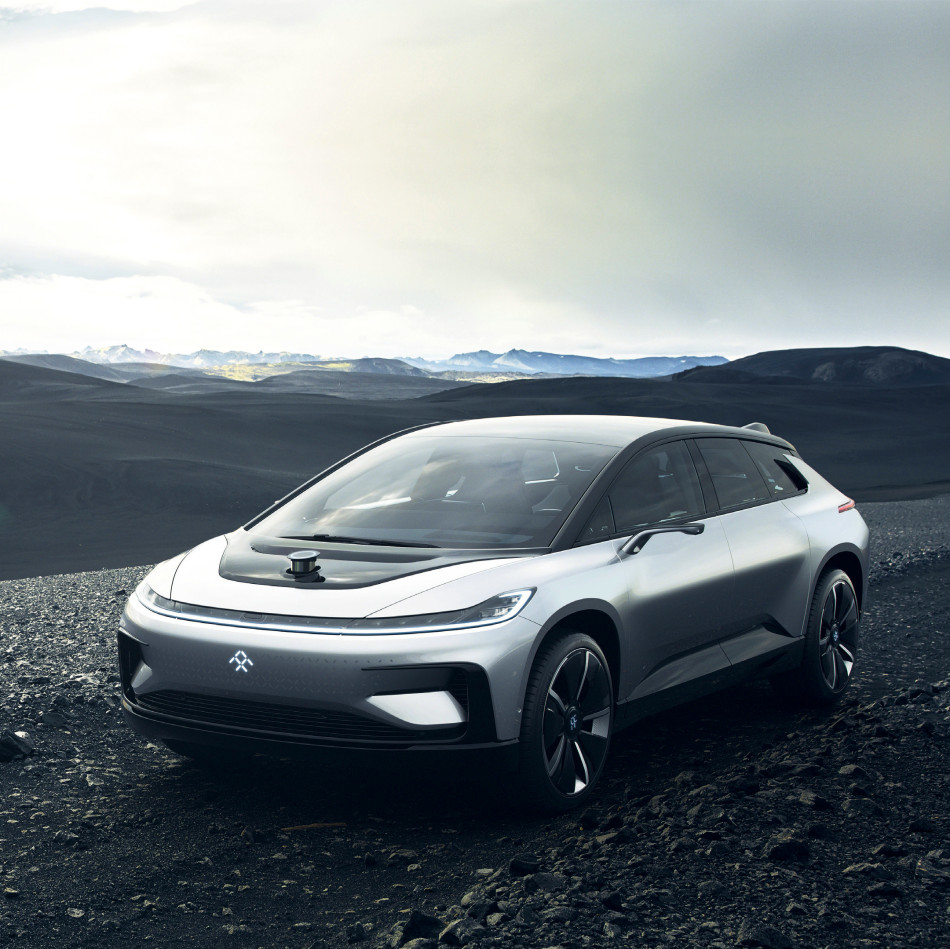
AUDI AUTONOMOUS Q7
Audi demonstrated its latest advances in autonomous mobility at CES with a fully autonomous version of it Q7 SUV. Utilising artificial intelligence provided by Nvidia, a tech firm most commonly associated with high-level graphics cars for computers, the Q7 is capable of end-toend deep learning and can read signs, navigate around obstacles, and drive on a variety of surfaces including grass and dirt. According to the firm’s US President Scott Keogh the system will be ready for production in 2020.
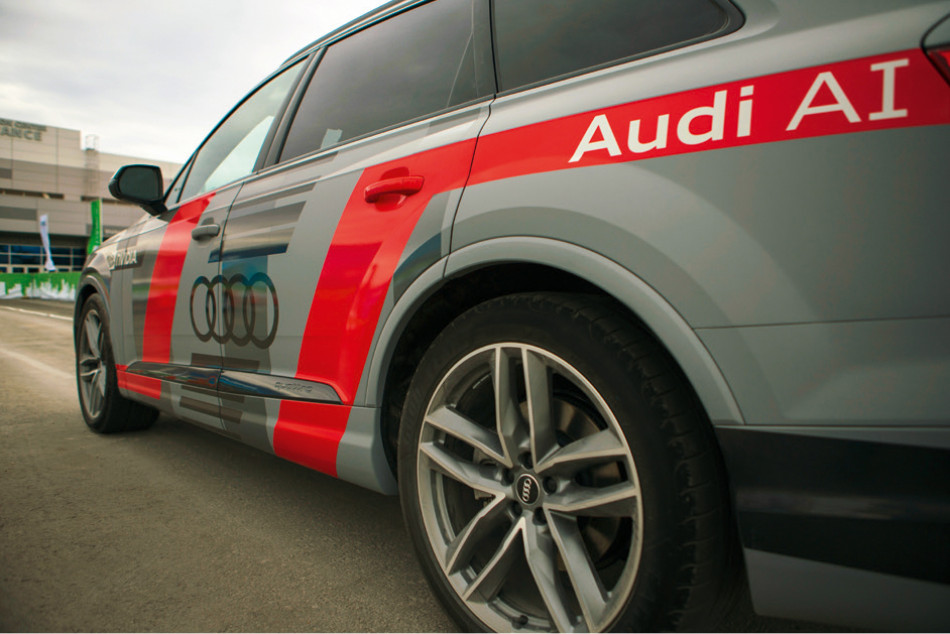

 Facebook
Facebook Twitter
Twitter
